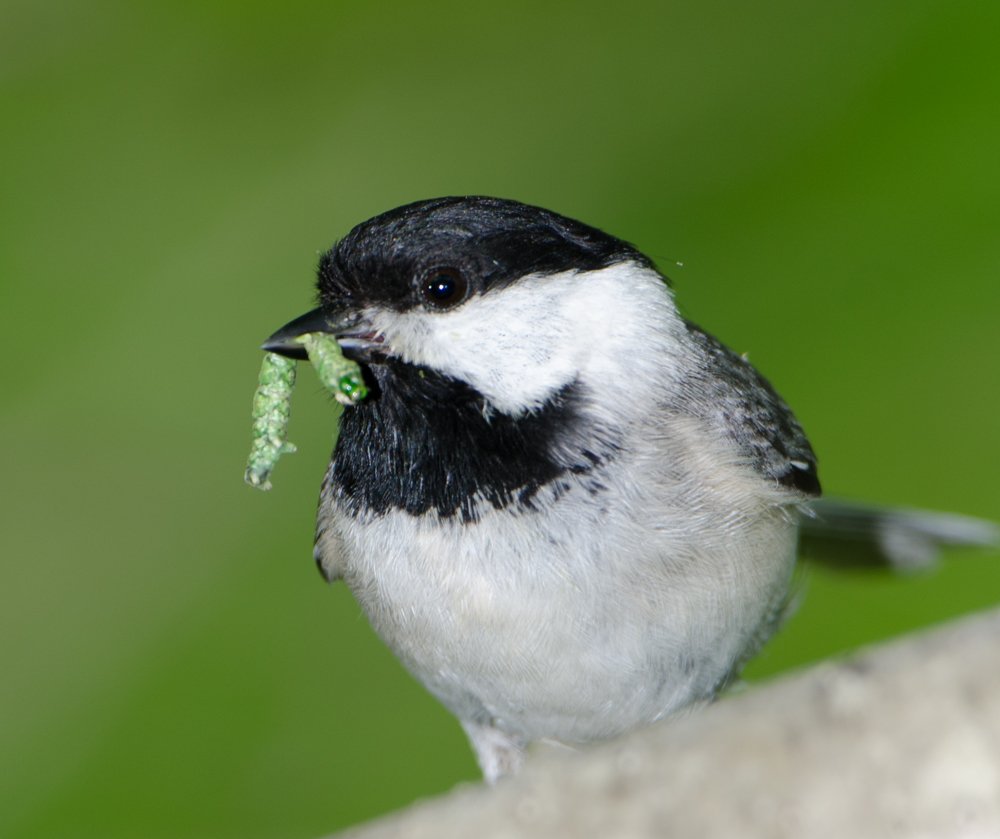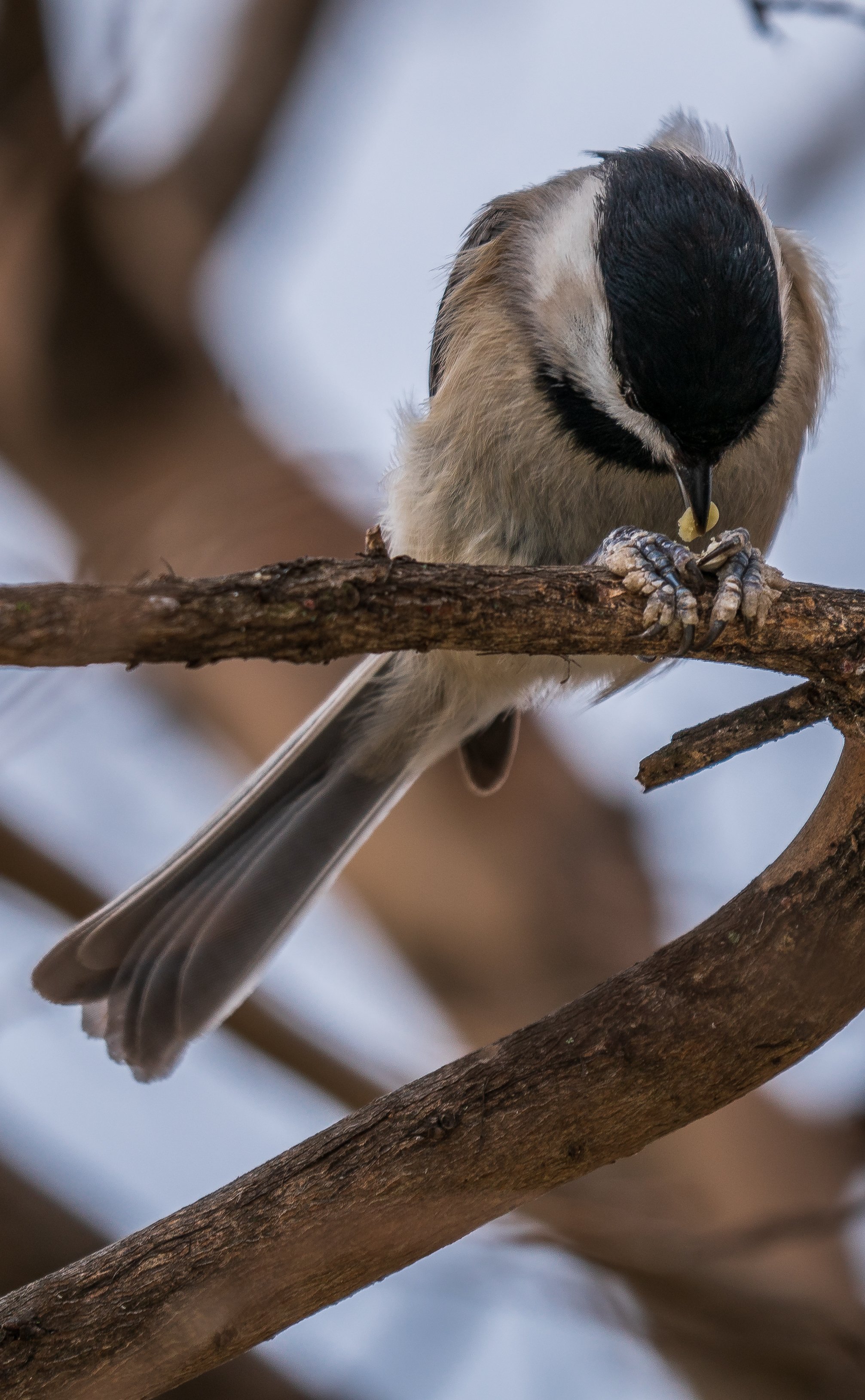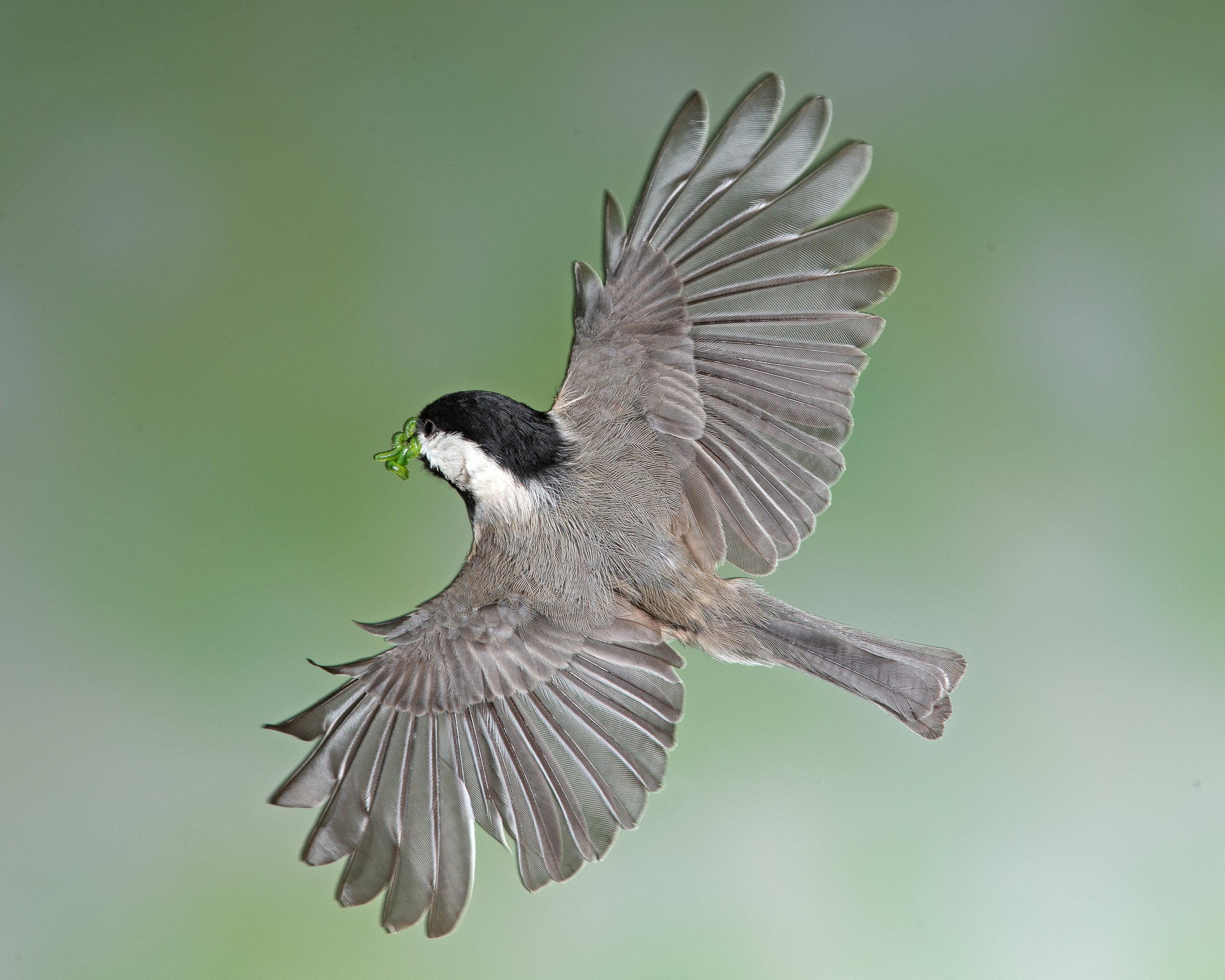Carolina Chickadee (Poecile carolinensis)
Carolina Chickadee with caterpillar courtesy of Douglas Tallamy
The familiar black-capped and bibbed gray songbird is a year-round resident of northern Virginia. Chickadees need dead or living large trees, where they can excavate cavities for nesting sites and forage for insects on the leaves and branches. In winter Chickadees join feeding flocks of titmice, downy woodpeckers, kinglets, and other species. Chickadees are fearless sentinels, and warn of approaching predators with their Chick-a-dee-dee-dee alarm call. They can be helped by providing nest boxes and feeders, and by planting native shade trees that provide nest sites, insect food, and shelter.
To learn more about ID, range, breeding, and voice, visit Cornell’s All About Birds
| What Carolina Chickadees Need | How Can We Help |
|---|---|
| Food and Water: Chickadees feed on insects on twigs, flowers, and clusters of dried leaves in trees, hanging upside down from a branch tip to inspect the underside of leaves or tear them apart, looking for food. Spring through fall, animal foods (especially caterpillars) make up 80 to 90 percent of Chickadees' diet, and in winter they eat animal and plant foods equally. Their diverse diet includes caterpillars, true bugs, bees, ants, wasps, aphids, tree-hoppers, leaf-hoppers, spiders, and fruits or seeds of poison ivy, blackberry, blueberry, pine, mulberry, redbud, and Virginia creeper. Chickadees may cache seeds or insects underneath a branch or inside a dried leaf and return later to eat them. |
|
| Shelter: During the breeding season, females sleep in the nesting cavity, while males sleep on nearby sheltered branches in trees, vines, or shrubs. When not breeding, birds sleep individually on sheltered branches or, especially when cold, in tree cavities. |
|
| Nesting: Chickadees build nests in tree cavities or nest box 8 to 15 feet above the ground. They often use cavities in trees near the edge of a forest or woodland, where they can compete with bluebirds. They usually defend a breeding territory of three to six acres, though sometimes pairs may build nests within 30 feet of each other. Chickadees feed their nestlings caterpillars and other insects, which must be available for them to successfully raise their young. |
|
| Other Threats: Chickadees, especially nestlings and young birds, may fall victim to roaming house cats, black snakes,
wrens, hawks, and other predators.
|
|
Carolina Chickadees and Their Habitat Needs:
Research by Narango, Tallamy, and Marra shows it takes that much to grow the hundreds of caterpillars and insects needed every day to feed a Chickadee family. Yards where less than 70 percent of the vegetation is native essentially starve the nestlings. Chickadees are less likely to build nests there, and if they do, less likely to successfully rear their young.
Carolina Chickadees are in decline in our region. You can help by providing the right nest box specifically for them with guidance help from NestWatch
Check out Carolina Chickadee near you:
Find sightings using eBird Data: Narrow the view by entering your county in the “DATA FOR:” filter





